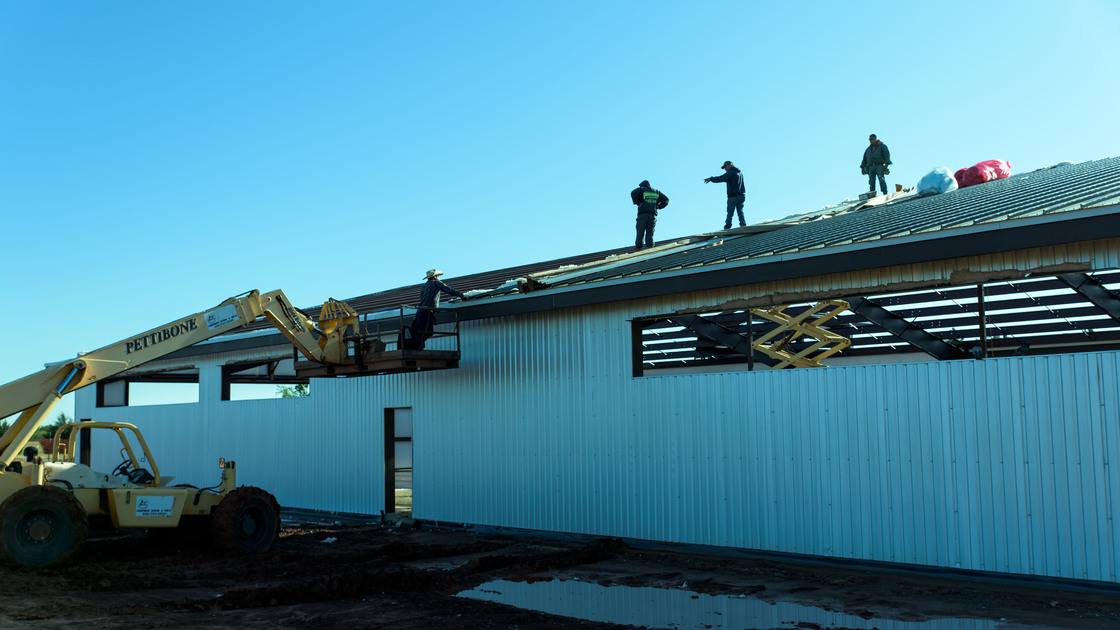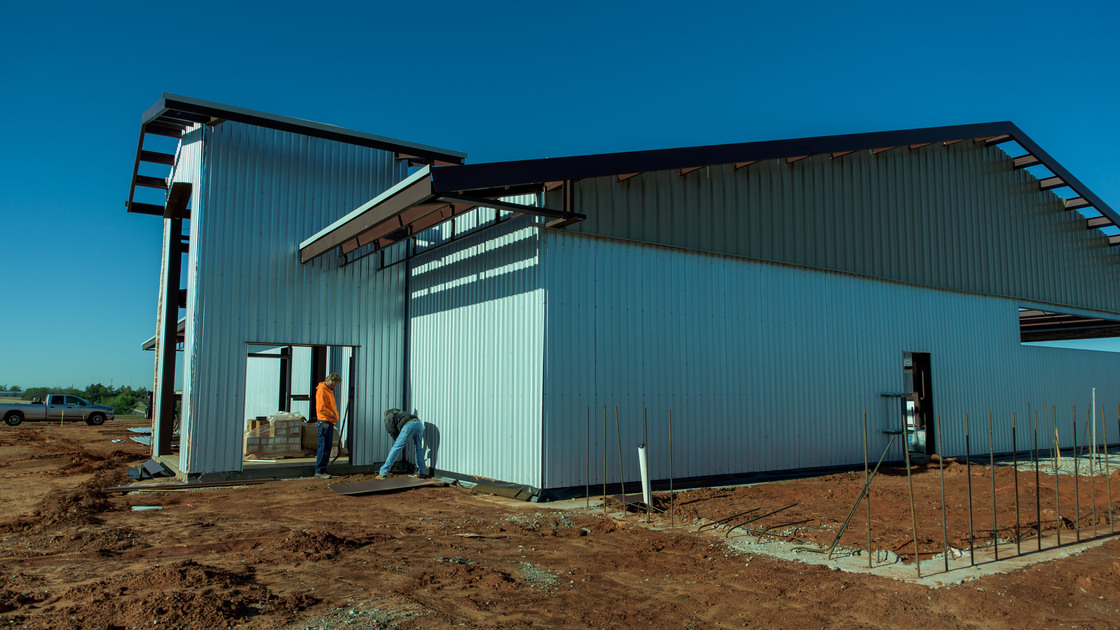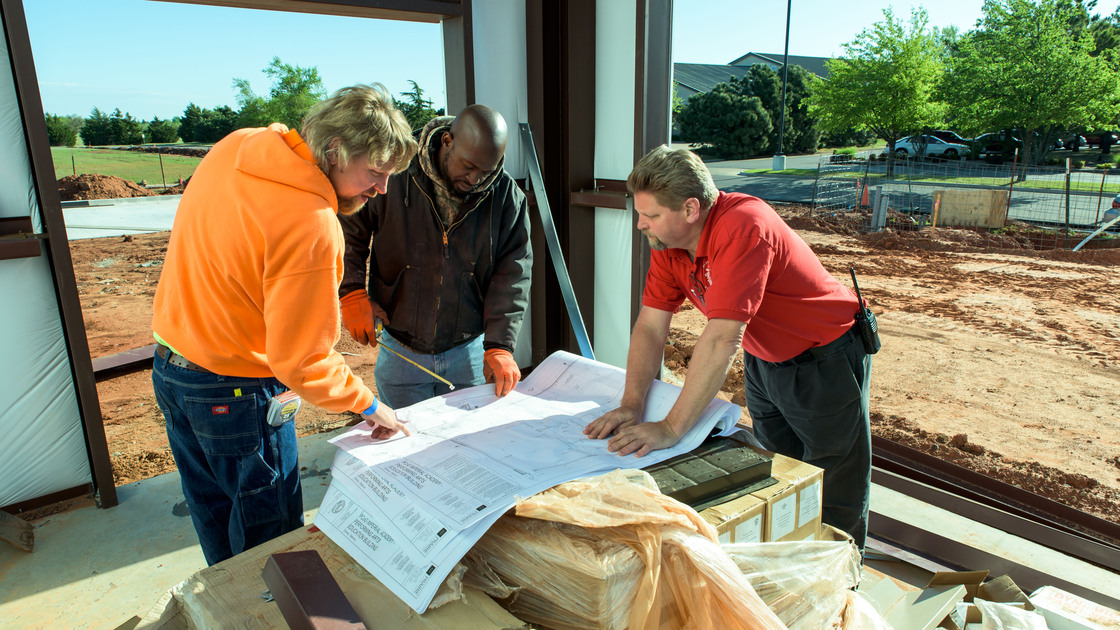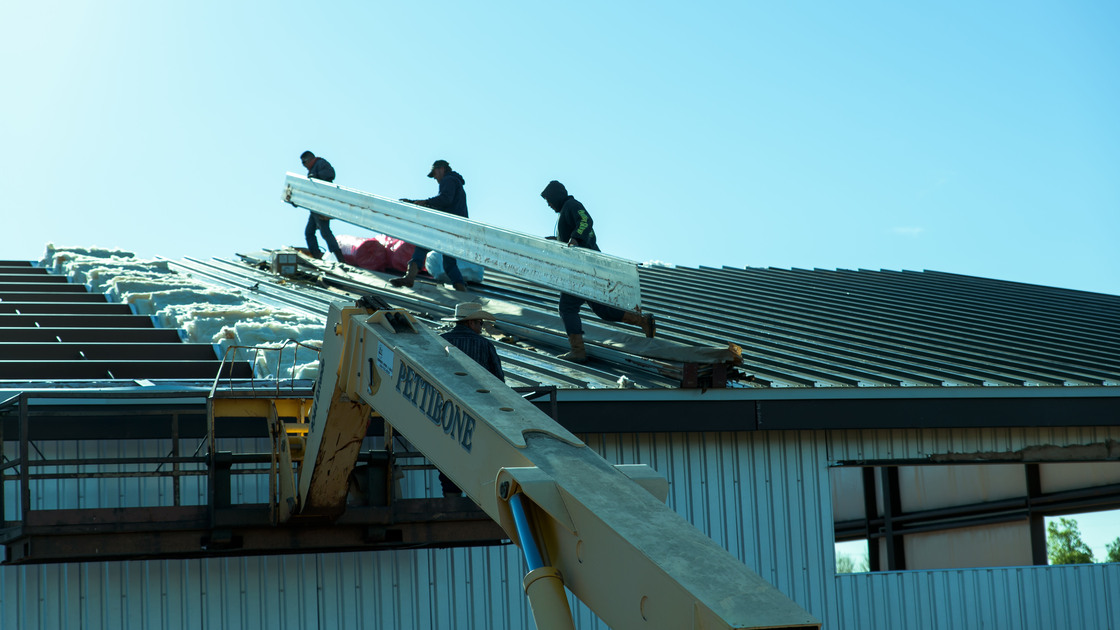EDMOND—The reverberations of percussion instruments can be heard on the campus of Herbert W. Armstrong College this week as metal erectors and other tradesmen finish constructing the exterior shell of the campus’s new music and dance building. The noises of drills, grinders, punches, cutting torches, arc welders and impact wrenches are sounding across campus as workers dry-in the structure in preparation for its next phases of construction.
Facilities manager Roger Brandon said that with the majority of the structural red iron and the exterior sheet metal in place, the focus of the project is the roof.
“Once that’s in place, then we can turn loose the interior trades,” he said. This process will include dozens of light-gauge metal framers, plumbers, electricians, flooring installers, heating and air conditioning mechanics, cabinetmakers, painters and other contractors building out 10,170 square feet across 17 rooms on the one-story, $1.15 million structure.
Function
Mr. Brandon said the building will include three large spaces, including a lecture room for approximately 150 occupants that contains tiered seating and a raised stage. The space will be built to accommodate music classes, forums and assemblies, youth camp orientation and similar activities. An orchestra room will allow for music students to leave their larger instruments set up permanently, will contain a humidity-controlled instrument storage room, and will offer nearby access to two other rehearsal rooms plus the lecture room. A dance studio with a sprung floor similar to the one installed in the Barbara Flurry Memorial Hall will accommodate dancers with ballet bars, mirrors and built-in cabinets for costumes and other storage.
Another sprung floor is planned for one of the rehearsal rooms and will double as a warm-up room for dance students and a sectional practice room for music students. Aside from utility rooms, restrooms and a small laundry to serve other parts of campus, the building will contain four offices for music and dance staff.
Mr. Brandon said the location across from the John Amos Field House saves money by taking advantage of the existing parking lot and leaving open the possibility for future growth to the north and south. The Philadelphia Church of God crew and utility services are routing electrical, sewage and water lines across the area with that potential in mind.
Facilities superintendent Wayne Turgeon said the location was selected for its situation between the field house and the duplexes used for the Imperial Academy grade school, which will allow students to walk to most of their classes without having to cross the road.
Crews are also constructing a one-way horseshoe driveway approaching the building’s drop-off area on the field house side of the building, as well as a small parking lot to the north. The exterior of the finished building will resemble Barbara Flurry Memorial Hall, with a dark metal roof and a tan brick veneer.
Necessity
Mr. Turgeon said the building will benefit grade school and college music students as well as adults and is a priority because “we have a strong emphasis in the Church on music and dance when such programs are being cut from many public schools, mostly due to lack of funding but also lack of appreciation for culture.” He said that it will also open up space at the memorial hall for possible additional classroom or student residential space.
pcg music director Ryan Malone, who will office in the new building, said it is important because it devotes more dedicated space to music classes and also consolidates the department’s activities so that instructors and students don’t have to meet in separate buildings. He said the result will be more flexible rehearsal schedules, less wear and tear on instruments, and a more efficient use of class time.
Mr. Malone said that the music program has benefited from human resources and a good supply of donated instruments but lacked devoted space. “Since we’ve been resourceful with the various campus spaces for six years, the conservatory building is definitely ‘timely’ for us,” he said. “We’re ready to move in yesterday.”
Mr. Malone says the building’s name is the Dwight Armstrong Performing Arts Conservatory. Mr. Turgeon says the goal is to complete construction by mid-August if possible, in time for the academic school year. At that point, when the noises of construction fall silent, dance music, winds, strings and percussion instruments of a different kind will begin to play.




